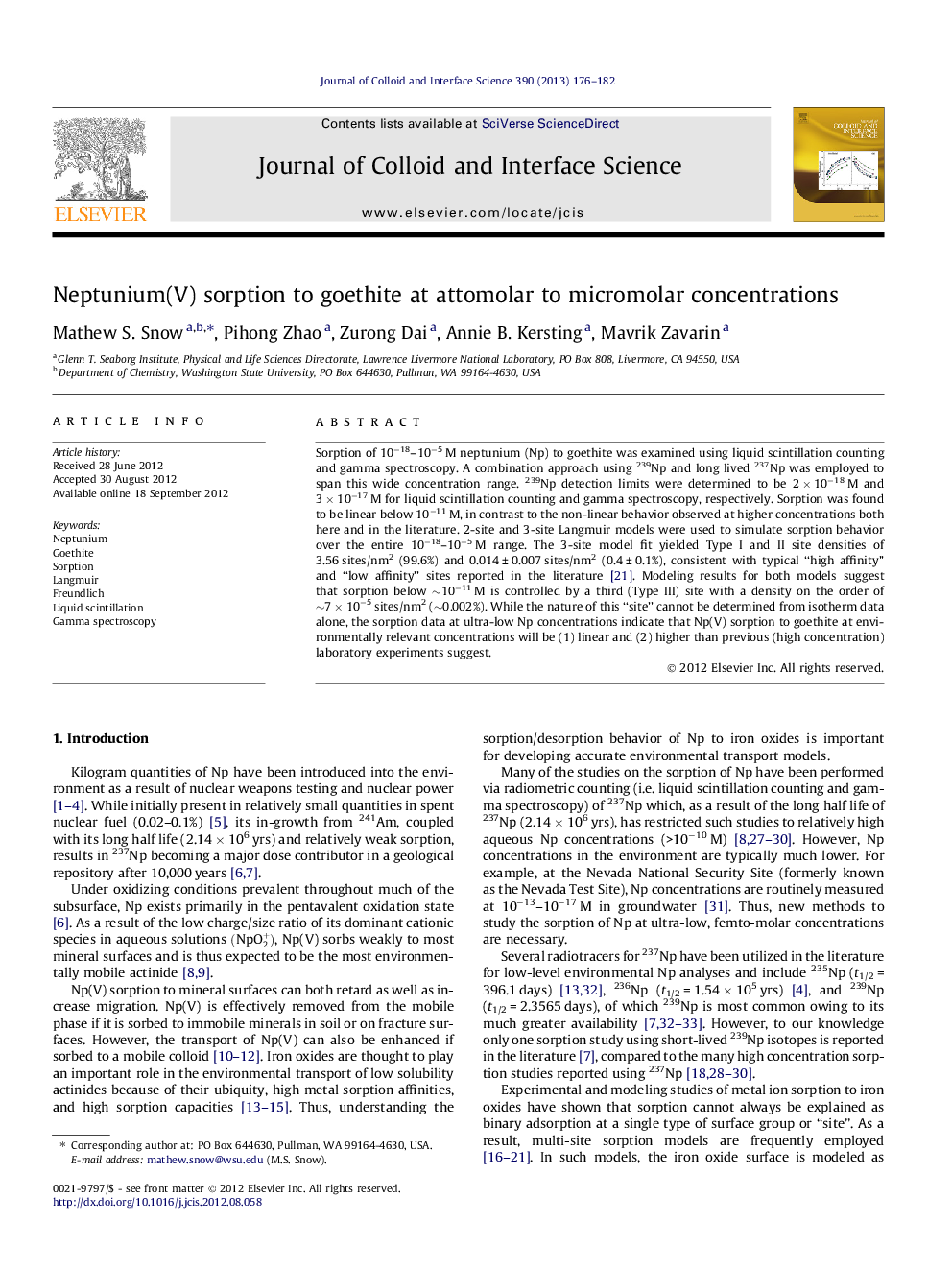| Article ID | Journal | Published Year | Pages | File Type |
|---|---|---|---|---|
| 607844 | Journal of Colloid and Interface Science | 2013 | 7 Pages |
Sorption of 10−18–10−5 M neptunium (Np) to goethite was examined using liquid scintillation counting and gamma spectroscopy. A combination approach using 239Np and long lived 237Np was employed to span this wide concentration range. 239Np detection limits were determined to be 2 × 10−18 M and 3 × 10−17 M for liquid scintillation counting and gamma spectroscopy, respectively. Sorption was found to be linear below 10−11 M, in contrast to the non-linear behavior observed at higher concentrations both here and in the literature. 2-site and 3-site Langmuir models were used to simulate sorption behavior over the entire 10−18–10−5 M range. The 3-site model fit yielded Type I and II site densities of 3.56 sites/nm2 (99.6%) and 0.014 ± 0.007 sites/nm2 (0.4 ± 0.1%), consistent with typical “high affinity” and “low affinity” sites reported in the literature [21]. Modeling results for both models suggest that sorption below ∼10−11 M is controlled by a third (Type III) site with a density on the order of ∼7 × 10−5 sites/nm2 (∼0.002%). While the nature of this “site” cannot be determined from isotherm data alone, the sorption data at ultra-low Np concentrations indicate that Np(V) sorption to goethite at environmentally relevant concentrations will be (1) linear and (2) higher than previous (high concentration) laboratory experiments suggest.
Graphical abstractFigure optionsDownload full-size imageDownload high-quality image (88 K)Download as PowerPoint slideHighlights► 239Np tracers enable Np sorption studies at ultra-low concentrations. ► Change to linear Np–goethite sorption behavior below 10−11 M. ► Multi-site Langmuir models require trace, Type III site to describe sorption behavior.
